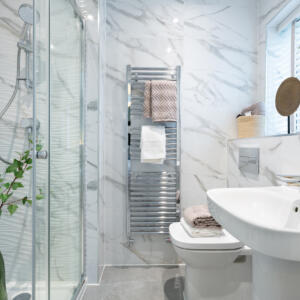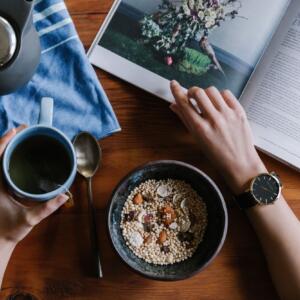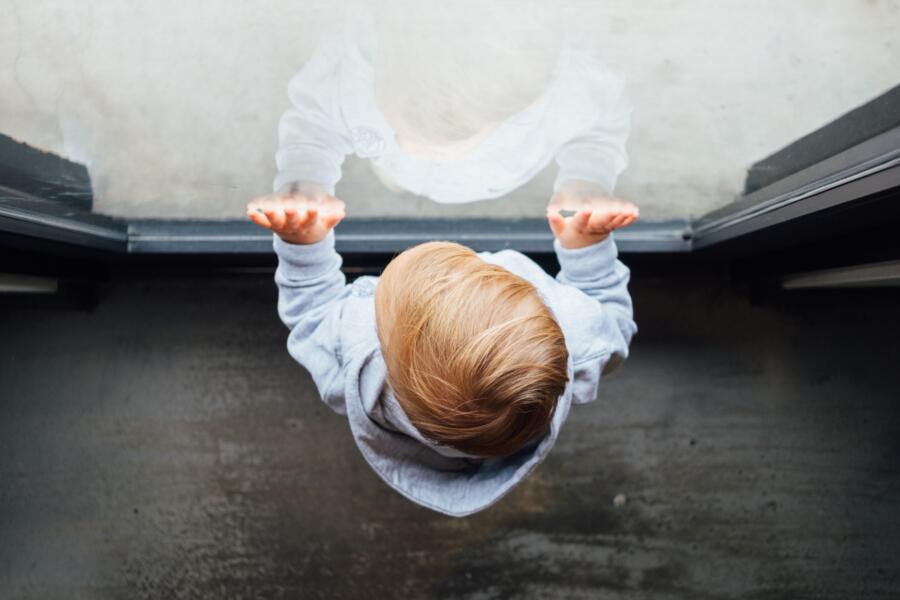
Before having a child, wet and chilly autumn days meant curling up on the sofa with a hot drink, a blanket and some good TV. Now that I’m a parent, well, it’s rather less relaxing because cabin fever soon sets in for all of us, and easy but fun activities are needed to keep boredom at bay until the rain, rain goes away and we can head outdoors again.
Here are 10 inspiring activities that I’m going to be trying at home to entertain my young toddler through this autumn and winter, using everyday household objects that most of us are likely to already have available.
DIY treasure basket
It doesn’t matter how elaborate or expensive the sensory toys I buy for my toddler are, she will always prefer to play with random household objects – like the remote control, a doorstop, and of course my mobile phone! So I’m going to fill a basket or shoebox with ‘treasures’ from around the home that would be safe and age-appropriate for her to play with, and let her go wild with taking them out and inspecting each one, while we have a chat about what they are.
Some things I might put in the box include:
- Kitchen tools, like a silicone whisk or pastry brush, wooden spoon, or plastic funnel
- Clean and dry bathroom accessories, such as a sponge or shower puff
- Empty and washed containers, for example plastic bottles with lids removed, a butter tub, an egg box, or a large measuring lid from a laundry detergent bottle
- Soft sensory items like a neck scarf, shorter lengths of wide ribbon, or various fabric swatches
- Natural knick-knacks such as large shells collected from the beach, pine cones or feathers
- An old remote control with the batteries removed, to stop her from hiding ours!
Sensory shakers
Start saving your empty drinks bottles to make your own sensory shakers. Once they’re dry and the labels have been removed, pour in a handful of uncooked rice, lentils or dried pasta, then seal up the lid with glue or plenty of sticky tape.
I might make our shakers even more exciting by using food colouring to dye the grains first, or by swapping them out for a variety of buttons and beads from my sewing kit - the noisier and shinier, the better!
Cardboard box shape sorter
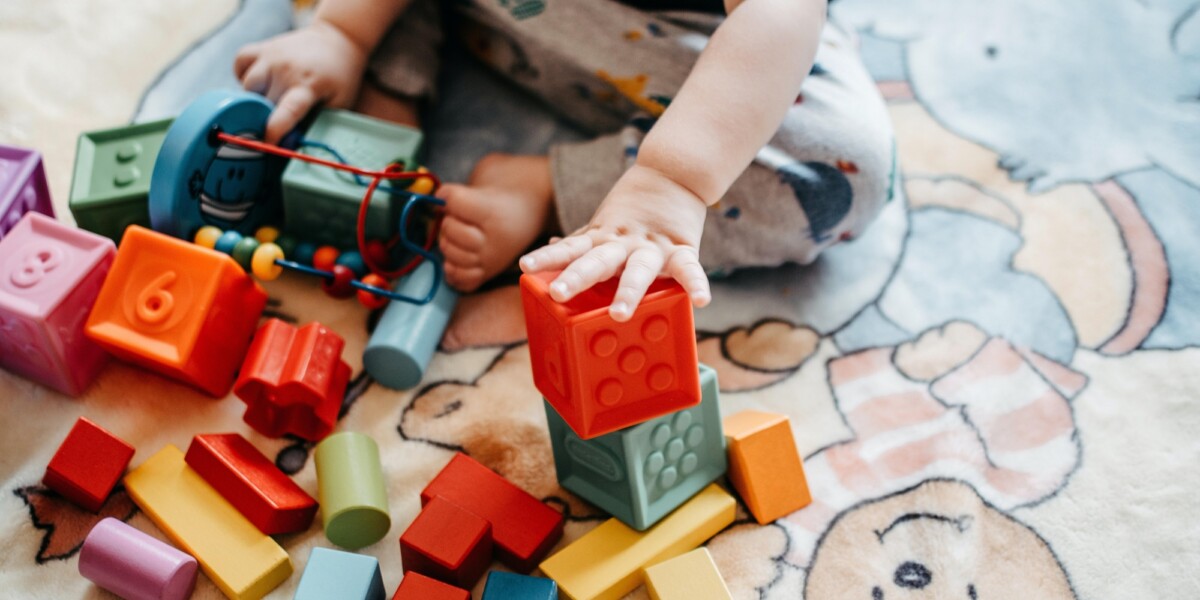
I’m sure you already have a shape sorter in your toddler’s toy collection, but with a cardboard box, you can make this game even bigger and more exciting.
I’m going to take a large, empty box, and tape down all the edges before cutting out different sized and shaped holes for various toys to fit through. My daughter really enjoys posting objects into bigger containers, so this is an activity I know she’s going to love.
Masking tape car track
I’m certain that we all have a roll of masking tape at home from a previous DIY project, so dig yours out and use it to make a car track. Simply stick lengths of masking tape, or wide paper tape to a hard floor, then use a marker pen to draw ‘road markings’ down the middle, and there you have a track for toy cars to follow.
If your toddler isn’t old enough to push along their cars, they’ll enjoy watching you do it for them, especially if there are a few dramatic bumps with other cars along the way!
Make-your-own water mats
My daughter loves playing with water, but it’s not always practical, so I’m going to try making my own sensory water mats using large resealable food bags. I’ll add a cup or two of water and then a drop of food colouring, and some small, rounded objects like buttons.
Then, when the bag is sealed up with the air removed, I’ll lay the bag down flat on my kitchen floor and use wide sticky tape around the edges to secure it in place. Then my daughter will have a fun water mat to play with, and chase around the objects inside with her fingers. She gets all the fun of messy play, and I get none of the mess!
Colander full of ‘worms’
This one’s a lot more fun than it sounds, especially if your little one loves eating wriggly spaghetti. Take a small handful of cooked spaghetti, and thread each strand through the holes of an upturned colander so it looks like there are worms coming out of it! Then, place the colander on your child’s high chair so they can ‘rescue’ all the worms and maybe even eat some too.
I’ll be using this idea for when I need to do some batch cooking and keep my daughter occupied, but safely out of the way. For extra sensory stimulation, you could use food colouring to dye some of the strands.
Mega mural wall
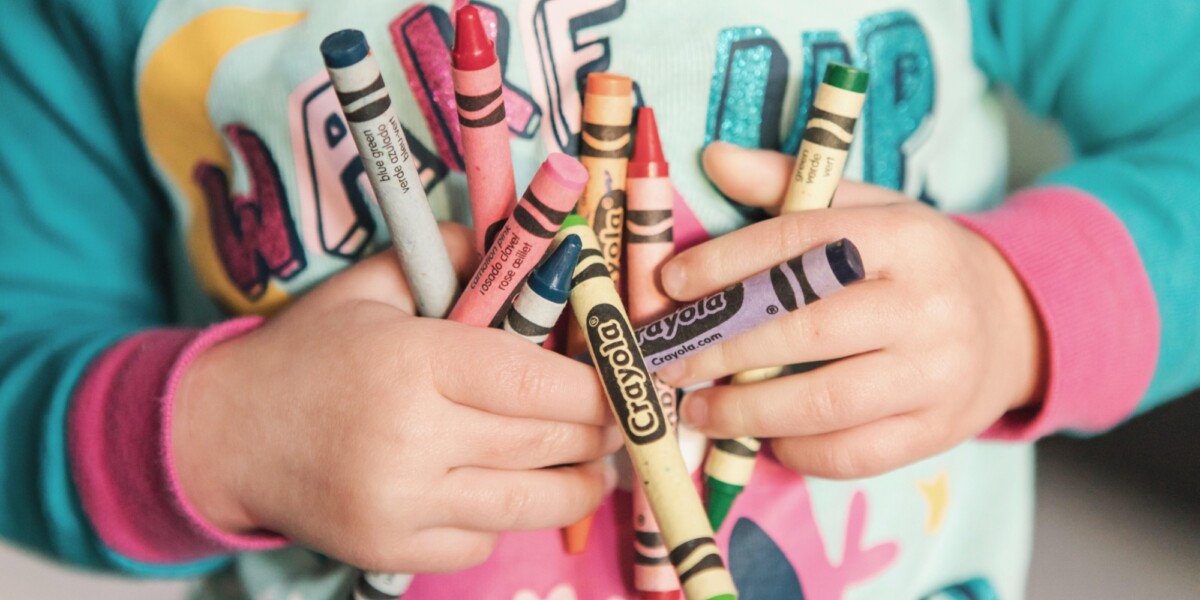
Make your toddler’s dreams come true and let them draw all over a wall – once you’ve protected it with paper, that is.
Use masking tape or paper tape to cover a large section of wall with individual pieces of paper, or lengths of wrapping paper, then hand over the chunky crayons and see what your mini artist can create. It’s the ideal way to get the urge to scribble out of their system, and you can join in the fun too.
Cardboard tube tunnels
Don’t throw away the cardboard cores from your toilet roll or kitchen roll - save a few and use them to create tunnels for your toddler to drop objects into. A few different cardboard tubes, sticky-taped vertically to a cupboard door (with the door safety catches in place, of course) make fun tunnels for your little one to drop light objects into, such as large pom poms or chunky building blocks. And the more tubes you have, the more elaborate of a ‘course’ you can make by sticking them at different angles.
This is great fine motor skill practice and for older toddlers, you can have a race to see whose object reaches the ground first!
Muffin tin colour sorter
If you have an older toddler who is able to understand and recognise colours, you could use a clean muffin tin to make a colour sorter for small building blocks or toys. Label each hole with a different colour (using coloured pen or card as a visual cue) and then ask your toddler to sort each block or toy into the correct hole. For an additional challenge, they could use some silicone cooking tongs, or even a spoon to pick up each toy.
My child is too young for this yet, so instead I’m going to place some of her smaller toys in a few of the holes and then use soft play balls to cover them up. She’ll really like removing all the balls to find the toys that have been hidden.
Bathtime bonanza
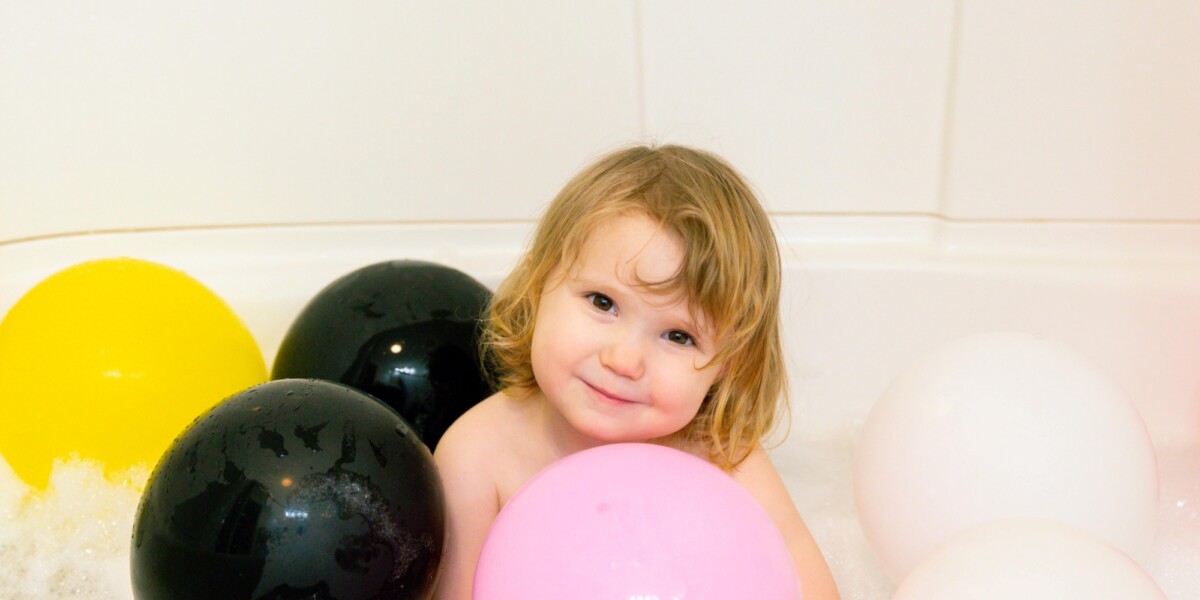
No sensory activity for a toddler is more immersive than a bath, and when it’s miserable outside it’s a fail-safe choice for entertainment (and warming up). There are a few ways you can enhance the bathtime experience and make it more of a novelty than a practicality.
First of all, the bathtub is the perfect place for keeping mess contained, so before filling it up you could let your toddler finger-paint the sides with washable paints, if you already have them. Shaving foam is also really fun to play with and easy to rinse away – just as long as you’re sure your child won’t try to eat it!
When it’s time to get clean, a plastic colander or mesh sieve can be used in the water for ‘fishing’ out toys, and a variety of plastic cups and jugs are ideal for learning to pour. If you have sensory lights that don’t require a mains connection, turn the lights down and make a bathroom disco with music on your phone or a wireless speaker, and even some balloons. It might just become the new bathtime standard.
Please note, if you do decide to try any of these in your home, as with any activity please supervise your child at all times, only select activities and/or objects that are appropriate for your child’s age and skill level, and always be mindful of choking hazards if your toddler has a tendency to put things into their mouth.
Share
Topics
Lifestyle Seasonal Tips Family & KidsYou might also like
-

Four tips for decorating with family photos
-

Affordable Mother’s Day ideas for making priceless memories
-

How to host a five-star family movie night
-

How to overcome ‘white box syndrome’ after moving into a new build home
-

From exchange to EPC rating: We explain the most confusing house buying terminology

